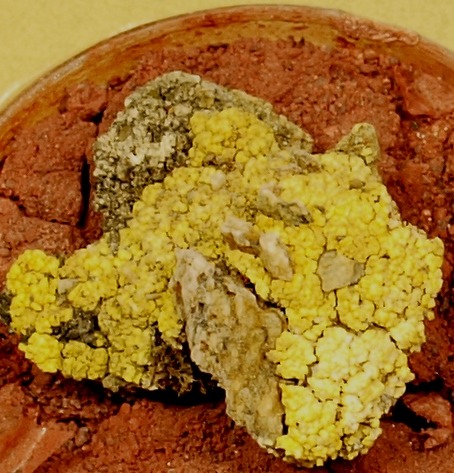Lichen on MarsLichen P. chlorophanum on S-MRS Mars-analog substrate. Image: German Aerospace Center&
Lichen on MarsLichen P. chlorophanum on S-MRS Mars-analog substrate. Image: German Aerospace Center’s Institute of Planetary ResearchHumans cannot hope to survive life on Mars without plenty of protection from the surface radiation, freezing night temperatures and dust storms on the red planet. So they could be excused for marveling at humble Antarctic lichen that has shown itself capable of going beyond survival and adapting to life in simulated Martian conditions.The mere feat of surviving temperatures as low as -51 degrees C and enduring a radiation bombardment during a 34-day experiment might seem like an accomplishment by itself. But the lichen, a symbiotic mass of fungi and algae, also proved it could adapt physiologically to living a normal life in such harsh Martian conditions—as long as the lichen lived under “protected” conditions shielded from much of the radiation within “micro-niches” such as cracks in the Martian soil or rocks.“There were no studies on adaptation to Martian conditions before,” said Jean-Pierre de Vera, a scientist at the German Aerospace Center’s Institute of Planetary Research in Berlin, Germany. “Adaptation is very important to be investigated, because it tells you more about the interactions of life in relation to its environment.”Previous Mars simulation experiments focused on simply measuring the survival of organisms at the end of a given time period. By contrast, de Vera and his group of German and U.S. colleagues measured the lichen’s activities throughout the experiment that was detailed in the Sept. issue of the journal Planetary and Space Science. They wanted to see whether the lichen had continued its normal activities rather than simply clinging to life in a dormant state.Two groups of lichen samples were placed inside a Mars simulation chamber about the size of a big pressure cooker, which itself sat within a fridge about the size of an armoire. That allowed researchers to simulate almost everything about Martian conditions such as atmospheric chemistry, pressure, temperatures, humidity and solar radiation—the lone exceptions being Martian gravity and the added contribution of galactic radiation.One of the lichen samples in the Mars chamber was exposed to the full brunt of radiation expected on the Martian surface, while the second set of samples received a radiation dose almost 24 times lower to simulate life in the “protected” condition. A third group of lichen samples sat outside the chamber as a control.Both lichen sample groups survived their month-long period under Martian conditions. But the heavier dose of radiation from a Xenon lamp simulating the surface radiation conditions kept the unprotected sample group from doing much beyond clinging to survival.Continue readingFurther reading:Cultivation of plants possible on MarsGrowing Plants On MarsCan Humans Live on Mars?Opportunity Rover finds new evidence that ancient Mars was habitableTerraforming of Mars (Wikipedia) -- source link
Tumblr Blog : probablyasocialecologist.tumblr.com
#space#astrobiology#biology#science
